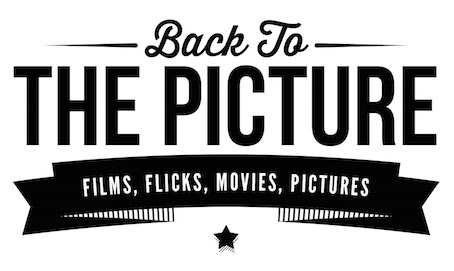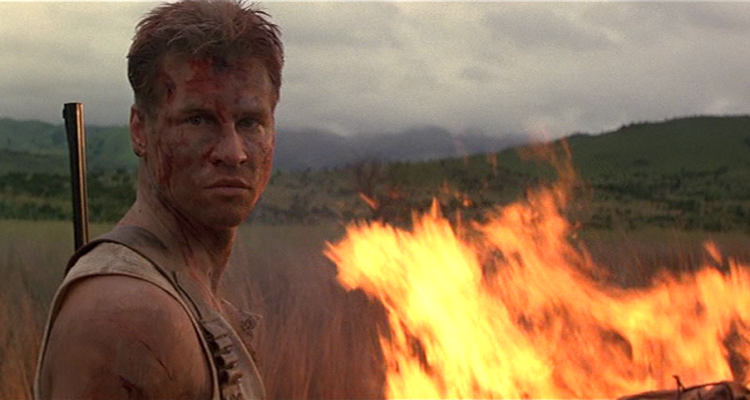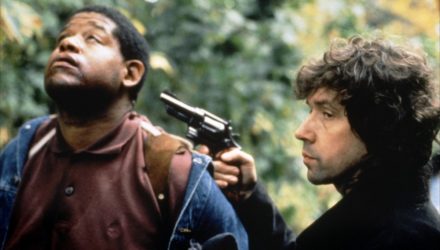William Goldman’s screenplay for The Ghost and The Darkness is, visually, a feast. Detailed descriptions abound in his script, but never overpower the extremely tight narrative, which is wrought of fully realized characters and includes a subtle voiceover.
The first thing that I noticed in this script, which may be indicative of Goldman’s other works, most of which I have seen, but not yet read, is how cinematic his style is. The sheer amount of CUT TO:’s that he uses are staggering. I would imagine any director reading this would feel incredibly hampered by his extremely suggestive writing style. For instance, there are many times when Goldman simply writes:
CUT TO:
The yellow eyes of the Darkness.
CUT TO:
A director may not necessarily agree with an extreme close up at this exact moment, and yet the screenplay leaves little interpretation. And yet, as Goldman builds scenes shot by shot, rather than moment by moment, they would likely realize his cinematic eye may not necessarily be spot on, but his cinematic clock is.
Where a modern writer would likely simply use a return, Goldman inserts CUT TO: instead. Whether or not he needs the use of CUT TO: is debatable. While it does take up a lot of page space, it does give much more weight to blocks of action that do not have it. And though these scenes are not suggestively described as a single shot, they feel that way when reading. In effect, what this use of CUT TO: achieves, when it is and is not used, is more of a descriptor of pacing rather than shots themselves. So whether or not a director (and reader) throws out his “shot list,” they are left with a sense of the pacing and rhythm of each scene regardless. Whether or not this was Goldman’s intent, it is certainly his effect.
The narrative itself is extremely tight, to which, if Goldman does not owe at least to the subject matter, he owes to his choice to never stray far from it. A man is tasked with building a bridge in Africa. Two bloodcrazed lions constantly attack his camp and workers, therefore, he must eliminate them. The script that follows executes this story simply, step-by-step. Examine the clarity with which Goldman sets this up in his opening pages. By the top of page three, we hear in clear words, the protagonist’s task: build a bridge over the Tsavo river in less than four months. This is delivered straight to the protagonist. Goldman wastes no time and wagers no hazard in ensuring the audience knows our protagonist’s goal: build the bridge. Not only does this give extremely clear direction for the film, but by having the protagonist’s main goal not be killing the lions, despite that being the main thrust of the film, it provides room for the protagonist to achieve something he is not qualified for, and gives clear opportunity for growth. All of this is set up in story is done by page three.
Goldman’s choice and use of voiceover is elegant. It is spare, but constant. By having a secondary character take the voiceover, it lends a mythic quality to the main characters. They are being talked about. This story is being told about them. And in a story which has become somewhat legend outside of cinema, the choice seems natural. Additionally, having the voiceover provided by an African character, in accent, provides an otherworldliness, at least to Western audiences. Both the writing and choice of character gives this voiceover the exact edge it needs to straddle the line between myth and truth. Part of this story is the fact that so many facets of it seem unbelievable, and yet are true, and the voiceover provides a fantastic storytelling element to what is otherwise an extremely straightforward and on-the-surface story. It allows the film to be within the grit of a true drama, while having one foot in the world of bedtime story, which is of course, what this story quickly became. Goldman’s voiceover acknowledges this and uses it, but never fully lets use retreat to it’s safety.
In a film about man-eating lions, and a subsequent hunt to find them, there is no dearth of opportunities for scenes of gore, scenes of seeing/not-seeing, and scenes of terror. Goldman delivers on all fronts. From the lions ripping through flesh, to Patterson’s constant search for them (Was that something in the grass?) Goldman paints with a visceral brush. The script comes alive on the page, and it is clear that Goldman is incredibly practiced at the quintessential task of the screenwriter: translating visual images into words on a page.
A tight taut screenplay that blends horror, thriller, and period piece, The Ghost and The Darkness may be a better screenplay than film. Classic style notwithstanding, this script reads simply and timely, providing the basis for what could be a great film, providing it could find a director unafraid to add style to the narrative. Unfortunately, the film by Stephen Hopkins, starring Val Kilmer and Michael Douglas, does nothing to elevate and texturize the screenplay. Luckily, Goldman knows what he’s doing, and while the subsequent film isn’t as great as this reviewer believes it could be, it’s still pretty great.
8.5
Sharp as Teeth
Story
9
Character
8
Dialogue
8
Imagery
9



